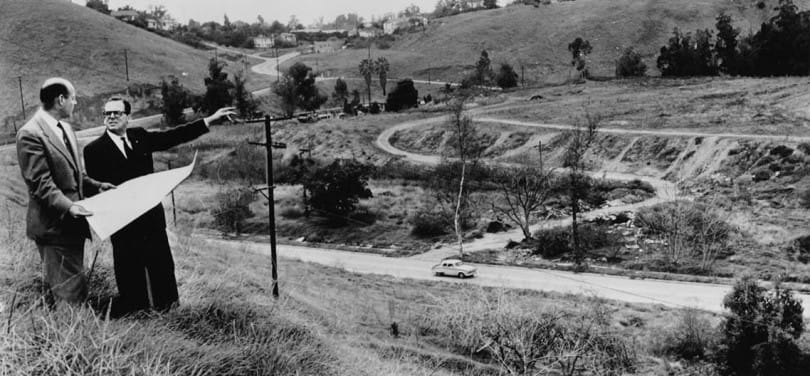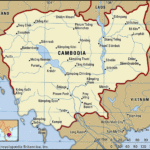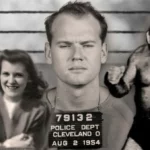Imagine a thriving neighborhood brimming with life and love, only to be erased seemingly overnight. This is the story of Chavez Ravine, a vibrant Mexican-American community in Los Angeles that was razed in the 1950s to make way for what the city called “progress.” This article takes a journey back in time to uncover the stories of the people who lived there, the pain of their loss, and how their legacy continues to resonate today.
History of Chavez Ravine
Before the legendary players and roaring crowds, Chavez Ravine, nestled in the hills near downtown Los Angeles, was a neighborhood known as Stone Quarry Hills. The name “Chavez Ravine” comes from Julian Chavez, a rancher and significant figure in early Los Angeles, who acquired a large portion of land in the area in 1844.
This 315-acre expanse was home to a vibrant Mexican American community, comprised of three main neighborhoods—Palo Verde, La Loma, and Bishop—each with its unique rhythm and stories. Life presented challenges for the residents, their proximity to downtown Los Angeles exposing them to prejudice and being unfairly labeled as a slum.
The 1940s ushered in significant changes and even grander promises. City officials, aiming to reshape the urban landscape, set their sights on Chavez Ravine, envisioning it as the ideal location for a massive public housing project. This vision, however, was met with resistance. Mayor Norris Poulson, along with powerful business interests, opposed the project, igniting a legal battle that would drag on for a decade.
During this time, residents received offers for their homes that seemed appealing on the surface. However, these offers often fell far below the actual value of their properties. Adding to the mounting pressure, the city began employing eminent domain, a legal tool that allowed them to seize private land for public use, even if the owners were unwilling to sell. Many residents, feeling deeply wronged, resisted, clinging to the homes and memories built over generations.
Sadly, the fight seemed impossible to win. Families were forced out, their homes demolished, and the vibrant community of Chavez Ravine was torn apart. The pain and displacement from the eviction have left a lasting scar, serving as a stark reminder of the social injustices prevalent at the time. The story of Chavez Ravine became a symbol of the struggles over affordable housing, the sometimes brutal nature of urban renewal, and the discrimination faced by minority communities.
Today, Dodger Stadium stands on that very land, a beacon of baseball and entertainment. However, its presence cannot erase the memory of what once stood there. The story of Chavez Ravine stands as a reminder that progress often comes at a cost, and sometimes, the price is far too high.
What Happened to the Residents of Chavez Ravine in the 1950s?
In the 1950s, Chavez Ravine, a vibrant community filled with life and tradition, was targeted by the city for a public housing project. To justify taking the land, the city labeled Chavez Ravine as “blighted,” a claim disputed by many. This label, however, allowed them to pressure residents to sell their homes.
Some families, facing the threat of eminent domain, felt they had no choice but to accept the city’s offers, often selling their homes at a loss. Others refused, desperately clinging to the memories and the only community they had ever known.
However, the promised public housing project never materialized. Instead, the land became the site of Dodger Stadium. For many, this was more than just the construction of a baseball stadium; it symbolized the displacement of an entire community, a wound that continues to resonate.
The story of Chavez Ravine has reverberations in discussions about gentrification, social justice, and the true meaning of progress. It serves as a powerful reminder of the human cost of urban development and the necessity of listening to and valuing the stories of those who have been displaced. As cities continue to grapple with similar issues, the story of Chavez Ravine is a call to listen to the voices of communities, to question the narratives presented, and to consider the enduring impacts of decisions made in the name of progress.
What is the History of Chavez Ravine?
The land now occupied by Dodger Stadium was once a thriving community of families, primarily Mexican-American, who had built homes, shops, and even a school within the canyons of Los Angeles.
However, the city, driven by ambitions of “development,” saw Chavez Ravine as prime real estate. This perspective ignored the lives and livelihoods of the residents who called it home. Pressure from the city to vacate the land intensified, leading to tension and, in some cases, even violence.
To acquire the land, the city utilized eminent domain, a legal tool that allows the government to take private land for public use, even if the owners are unwilling to sell. While the city promised to build public housing for the displaced families, this promise went unfulfilled. Instead, the land ended up in the hands of Walter O’Malley, the owner of the Brooklyn Dodgers, and Dodger Stadium was built.
The story of Chavez Ravine continues to spark debate surrounding issues of power, fairness, and the treatment of less influential communities. It underscores the reality that advancements, while often presented as beneficial for all, can come at a disproportionately high cost to certain groups.
What Happened at Chavez Ravine?
Chavez Ravine, before the 1950s, was a bustling community, home to families, businesses, and a strong sense of community. Los Angeles, in an attempt to modernize and develop, set its sights on this vibrant neighborhood, with plans for a new stadium.
The city, however, did not engage in a straightforward buyout process. They, instead, utilized eminent domain, which ignited outrage among residents. A fight for Chavez Ravine ensued, lasting for years, but despite the community’s best efforts, the bulldozers arrived in 1959, demolishing homes and displacing families.
Today, Dodger Stadium stands on the land that was once a thriving community. Its presence serves as a stark reminder of the human cost associated with urban development and how those in power often benefit, while the vulnerable are overlooked. The story of Chavez Ravine is a complex tapestry woven with legal battles, social injustices, and the enduring spirit of a community determined to be remembered.
How Much Did the Dodgers Pay for Chavez Ravine?
In 1958, the Dodgers acquired the land for their new stadium without paying any money. This was possible due to a referendum in which the people of Los Angeles voted to give the land to the Dodgers. However, the history of how the city acquired the land in the first place is more complicated.
The City of Los Angeles had previously gained control of Chavez Ravine through eminent domain. The city’s initial plan was to construct a public housing project but ultimately abandoned that idea. This left them with a valuable piece of property that was unused.
The Dodgers, seeking a new home after relocating from Brooklyn, New York, presented the city with an opportunity. In exchange for the land, the Dodgers would build a new stadium. This deal resulted in the construction of Dodger Stadium, which was completed in 1962.
Here’s a summary:
- The Dodgers obtained Chavez Ravine for free.
- The City of Los Angeles acquired the land through eminent domain.
- The city’s initial plan for public housing was never implemented.
- The Dodgers agreed to build a new stadium, Dodger Stadium, in exchange for the land.
What Was the Last Thing That Happened to the Original Occupants of Chavez Ravine in 1959?
The year 1959 marked the culmination of years of struggle for the Mexican-American families desperately clinging to their homes in Chavez Ravine. Their efforts to save their community, however, proved futile as they were forcibly removed from their homes to make way for the construction of Dodger Stadium.
Los Angeles, utilizing its power of eminent domain, seized the land. While the initial plan was to construct a public housing project, a shift occurred, with the city striking a deal with the Brooklyn Dodgers, clearing the way for a new stadium.
August 29, 1959, forever etched in the memories of those evicted, became a day of mourning, often referred to as “Black Friday.” The remaining families were removed by sheriff’s deputies enforcing a court order. Their belongings were scattered as the bulldozers stood ready to raze the remaining structures.
The story of Chavez Ravine transcends the loss of a neighborhood. It reflects a larger conversation about the balance of power, the complexities of progress, and the often-overlooked human cost of urban development. This story compels us to contemplate the balance between community rights and projects intended for the greater good. It raises questions about the limits of eminent domain and the responsibility of those in power to ensure fairness and minimize harm when employing such legal tools.
The events surrounding Chavez Ravine serve as a stark illustration of how vulnerable low-income communities, particularly communities of color, can be displaced by urban renewal and gentrification. This history underscores the importance of listening to and valuing these often-marginalized voices and advocating for policies that prioritize equitable development, ensuring that no community experiences the pain of displacement as profoundly as the families of Chavez Ravine.
How Many People Died in Chavez Ravine?
Determining the exact number of deaths in Chavez Ravine is a challenging task. Limited official records from that era and inconsistencies in oral histories have created a puzzle with missing pieces. However, dedicated individuals are painstakingly working to uncover the truth. They are meticulously examining old documents and listening to stories passed down through generations.
This investigation process takes time and dedication, but it is crucial to provide the affected families with answers and, hopefully, some sense of closure.
Why Were Residents Evicted from Chavez Ravine?
In the 1950s, generations of families, predominantly Mexican American, were forced out of their homes in Chavez Ravine to make way for what would become Dodger Stadium. The residents, many of whom were working-class families, were promised new homes as part of a large-scale public housing project. However, those promises went unfulfilled. Instead, the city employed eminent domain to seize the property.
Unfortunately, this situation reflects a larger trend across America during that period known as “urban renewal.” Often, this process resulted in the displacement of minority communities, particularly those with lower incomes, to make way for new developments. This displacement led to the loss of numerous vibrant cultural centers, leaving a trail of heartbreak and betrayal.
The evictions at Chavez Ravine left an enduring scar on Los Angeles, a constant reminder of the human cost of so-called progress. It ignited protests and fueled a fire in those who recognized the injustice. Even today, Chavez Ravine stands as a powerful symbol of the ongoing fight for affordable housing, the true meaning of urban renewal, and the protection of minority rights.
The story of Chavez Ravine is a poignant reminder that progress should never overshadow the importance of people’s homes and livelihoods. It represents a profound loss felt deeply by many, and its echoes continue to resonate today.
How Was the Land Essentially Taken From the Residents of Chavez Ravine?
In the 1950s, the city of Los Angeles decided to build a public housing project in Chavez Ravine. While this might have seemed like a positive initiative, the residents, who were content in their homes and had no desire to move, viewed it with skepticism.
The city’s plan, however, moved forward, and they utilized eminent domain, a legal tool that allows the government to take private property for public use, even if the owner is not interested in selling. While the city justified this action by stating that the public housing project served the “public good,” many suspect their true intentions were to acquire the land for Dodger Stadium.
The residents of Chavez Ravine fought against the city’s plan. However, their efforts were ultimately no match for the power of the government. By 1959, the remaining families were evicted, their homes demolished to clear the land for the construction of Dodger Stadium.
The eviction of Chavez Ravine had a profound impact on Los Angeles. Beyond the loss of land, it represented the uprooting of people’s homes, their community, and their lives. Many view it as a prime example of the unjust use of eminent domain, particularly its impact on minority communities. The story of Chavez Ravine serves as a reminder of the complexities of urban development and the significant impact such decisions can have on communities.
Think About This:
- Was the city’s use of eminent domain justified?
- How can a balance be struck between the needs of the many and the rights of the few?
- What are the long-term consequences of such actions on communities?
These questions lack simple answers. However, they are important to consider as the story of Chavez Ravine remains a part of Los Angeles history that continues to resonate today.
Why Were the Latinos Relocated From Chavez Ravine?
In the 1950s, Los Angeles underwent a period of significant urban renewal, with aims to modernize the city. This resulted in substantial changes, particularly for the residents of Chavez Ravine. This vibrant neighborhood, predominantly home to Mexican American families, was labeled as “blighted” by the city. This label, disputed by residents, was used to justify redevelopment plans.
The city’s plan was to build a massive public housing project in Chavez Ravine, arguing that this project would uplift the area and address the need for housing. To acquire the land, they used eminent domain. Many residents felt that the compensation offered for their homes and land was far below market value and viewed the project as a means to push them out.
Plans changed, however, when the public housing project, Elysian Park Heights, encountered setbacks and was eventually abandoned due to a shifting political climate and increasing public opposition. With a substantial plot of land and no concrete plans, they saw an opportunity when the Brooklyn Dodgers sought to relocate west and offered them the Chavez Ravine land to build a new stadium.
The residents, understandably, felt betrayed and fought back. They organized protests, filed lawsuits, and resisted relocation efforts. They understood that this wasn’t just about a stadium; it was a threat to their community, their heritage, their way of life. Despite their efforts, the city remained resolute, and in 1959, the remaining families were forcibly evicted.
The image of families being removed from their homes, their belongings left on the curb, illustrates the human cost associated with “progress.” The story of Chavez Ravine reflects a larger pattern of how minority communities, especially those without significant political power or economic resources, often bear the brunt of urban development. This event continues to spark debate and reflection, raising important questions about social justice, the limits of eminent domain, and a city’s responsibility to protect its most vulnerable residents. It casts a shadow on the legacy of Dodger Stadium, a constant reminder of the profound loss and injustice that occurred.
Is There an Elementary School Buried Under Dodgers Stadium?
While most of the structures in Chavez Ravine were demolished, the story of Palo Verde Elementary School is slightly different. To prepare the land for the stadium, the school building was demolished, but it may not have been completely removed.
Some believe that, to save time and money, construction crews might have built over the existing foundation and, possibly, portions of the walls. While it is unlikely that perfectly preserved classrooms exist beneath the stadium, there is a possibility that remnants of the school remain, entombed beneath decades of baseball history. This serves as a tangible reminder of the community that predates the stadium.
The possibility of the school’s remains has ignited debate. Some experts believe that further excavation could uncover more of the school. Others argue it is best to leave the past undisturbed. Regardless, the story of Palo Verde Elementary School adds a fascinating layer to the complex history of Chavez Ravine and Dodger Stadium.
Key Points
- Thriving Community: Chavez Ravine was a vibrant Mexican American neighborhood, initially known as Stone Quarry Hills, unjustly labeled as “blighted” to justify its redevelopment.
- Broken Promises: City officials promised residents new homes as part of a public housing project that never materialized.
- Eminent Domain: The city used eminent domain, a controversial legal tool, to acquire private land for public use, even if owners refused to sell.
- Lasting Impact: The forced evictions and demolition of Chavez Ravine left a lasting scar and continue to fuel discussions about gentrification, social justice, and responsible urban development.
- Symbol of Injustice: Chavez Ravine represents the struggles over affordable housing, the displacement of minority communities, and the often-overlooked human cost of urban renewal.
Minimum 4 Key Lines:
- Chavez Ravine’s Mexican American community was forcibly evicted in the 1950s. The land was initially designated for public housing but was ultimately used for the construction of Dodger Stadium.
- Despite being a vibrant and thriving neighborhood, the city of Los Angeles labeled Chavez Ravine as “blighted” to justify seizing the land for redevelopment.
- The eviction of Chavez Ravine residents sparked a decade-long battle over the land, highlighting a tragic example of the displacement of low-income communities for the sake of private development.
- The story serves as a reminder of the importance of affordable housing, the potential for abuse of eminent domain, and the need to protect communities from displacement.
Condensed & Organized Context:
Background:
- Chavez Ravine, a Mexican American community in Los Angeles, California, was unfairly perceived as a symbol of urban decay. Residents were generally poor, relying on farming for income
- The city saw an opportunity for redevelopment.
Eviction and Redevelopment:
- In the 1950s, the city pressured Chavez Ravine homeowners to sell their property, initially with promises of new housing as part of a public housing project.
- Many residents resisted but were ultimately forced to sell their land to the city at a less-than-fair market value.
- Instead of the promised public housing project, the land was used to build Dodger Stadium.
Controversy and Impact:
- The eviction of Chavez Ravine residents sparked a decade-long battle over the land.
- The city’s labeling of Chavez Ravine as “blighted” was a pretext for redevelopment, highlighting the city’s disregard for a vibrant community.
- The story is a tragic example of the displacement of low-income, minority communities for the sake of private development, prompting reflection on the use of eminent domain and the need for affordable housing.
Unique Insights:
- The Chavez Ravine story, despite its significance, is largely forgotten.
- This story sheds light on the history of urban renewal in Los Angeles, emphasizing the displacement of low-income communities.
- It serves as a reminder of the importance of affordable housing and the need to protect communities from displacement.
The story of Chavez Ravine is a stark reminder that progress can come at a high cost. This event continues to raise important questions about social justice, land rights, and the responsibility of prioritizing people over profit in the process of urban development.
- Unveiling Bernhard Caesar Einstein’s Scientific Achievements: A Legacy in Engineering - July 15, 2025
- Uncover who is Jerry McSorley: CEO, Family Man, Business Success Story - July 15, 2025
- Discover Bernhard Caesar Einstein’s Scientific Contributions: Unveiling a Legacy Beyond Einstein - July 15, 2025















